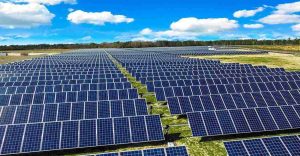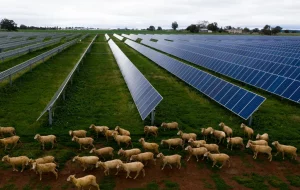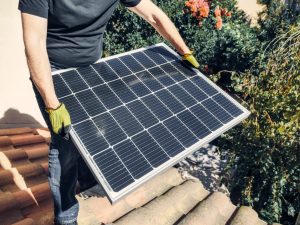Eel fish farming in japan
Eel fish farming in japan
Eel fish farming in japan Freshwater aquaculture in Korea is ruled with the aid of using Japanese eels (Anguilla japonica) observed with the aid of using carp, Amur catfish, rainbow trout, pond loach and tilapia.
More than 27 percentage of Korea`s freshwater aquaculture is furnished with the aid of using eel manufacturing because of ancient excessive call for in home in addition to distant places markets, specially in Japan.
Due to the constrained availability of untamed seed and a loss of standardized seed manufacturing generation, eel aquaculture is a hard industry.
Despite the shortage of a whole bundle for eel farming, aquaculture manufacturing grew from a negligible quantity of one hundred metric tons (MT) in 1971 to 7,257 MT in 2011 (Fig. 1). With fulfillment in growing glass eels, a increase section among larvae and juveniles, eel manufacturing is predicted to similarly expand.
Eel seed Eel fish farming in japan
In the beginning, eel way of life in Korea changed into constrained to the gathering of seed from rivers that changed into grown to supply fingerlings for export to Japan and Taiwan for similarly rearing.
Now, Korea increases Japanese eels now no longer best for fingerlings however additionally for grow-out to marketable sizes.
Indoor farming
Favorable authorities assist and studies that consists of the developing stories of farmers have enabled Korea to construct a robust basis for eel aquaculture.
Rising manufacturing displays upgrades in shooting and transporting glass eels, in addition to stocking and feeding for max yield.
Government coverage to shield freshwater sources in 1997 directed the bulk of inland farms to terminate way of life, so eel aquaculture eventually moved to indoor structures. A overall of 236 flow-thru and recirculating eel farms overlaying a place of 132 ha has been mentioned.
Indoor structures for eel farming undertake ongoing upgrades in strategies and system for more performance. Flow-thru structures with concrete bottoms are being changed with the aid of using round polypropylene tanks.
Tanks starting from 30 to three hundred rectangular meters in length are hired primarily based totally upon the lifestyles ranges of the Japanese eels.
Although Japan has advanced whole aquaculture generation for eels, its current annual manufacturing of a hundred and fifty to 2 hundred people isn’t always sufficient to fulfill outside call for.
In Korea, Pukyong National University initiated studies on Japanese eels in 2002 and finished fulfillment in fertilizing eggs. In , a majority of the eel studies moved to the country`s biggest fisheries studies entity, the National Fisheries Research and Development Institute (NFRDI).
Subsequently, Korea`s authorities fishery guidelines centered hatchery improvement for Japanese eels.
After a decade of studies efforts, Korea has in the end produced character glass eels for aquaculture. Korea must quickly have a whole aquafarming bundle for eels and start to play a more function in worldwide eel manufacturing.
Nutritional needs
A range of studies companies have stated diverse constraints want to be resolved to broaden a whole bundle for eel aquaculture. The authors consider that negative know-how of eel dietary necessities, diets and feeding practices is the main barrier withinside the similarly enlargement of eel aquaculture.
The maximum mortalities at eel farms had been mentioned at some point of weaning durations and at some point of edition to dry feed. Therefore, the Feeds and Foods Nutrition Research Center at Pukyong National University in Korea has been engaging in experiments with one-of-a-kind age companies of Japanese eels to assess nutrient necessities and diverse nutritional ingredients, in addition to the frame composition of untamed and cultured eels.
Protein necessities
The stability of protein to energy (P:E ratio) in feeds is critical, because it in the long run impacts the fulfillment of each aquaculture venture. Optimum nutritional P:E ratios had been decided for diets fed to numerous aquaculture species.
However, even though the optimal nutritional protein requirement for Japanese eel has been defined, the optimal P:E ratio has now no longer.
In consecutive six- and 16-week experiments, the authors reevaluated the optimal nutritional protein necessities for Japanese eels and tested the optimal P:E ratios for eels reared in a recirculating system.
Based on weight benefit, unique increase charge and protein performance ratio on the give up of the experiments, the optimal protein requirement for juvenile eels changed into decided to be 44.three percentage, and the P:E ratio changed into 24.1 mg protein/kJ.
Vitamin C necessities
The significance of diet C (ascorbic acid) in fish nutrients to hold important physiological techniques has been extensively stated, as fish are not able to synthesize the diet because of the shortage of L-gulonolactone oxidase enzyme, that’s important to transform L-gulonic acid to ascorbic acid.
Consequently, diet C necessities had been evaluated for almost all of commercially critical fish species, inclusive of Japanese eels.
Although the nutritional diet C requirement has been envisioned for Japanese eels the usage of L-ascorbic acid Ca because the supply of diet C, this requirement should range whilst different reassets of diet C are used.
Therefore, the authors performed experiments to reevaluate the nutritional diet C requirement in juvenile eels primarily based totally on increase overall performance and frame composition. Using L-ascorbyl-2-monophosphate because the diet C supply, consequences indicated the nutritional diet C requirement should variety 41.1-43.nine mg/kg food regimen in juvenile eels.
Arachidonic acid tiers Eel fish farming in japan
A excellent part of Korea`s Japanese eel manufacturing is primarily based totally at the grow-out of postlarval glass eels.
In any other experiment, the authors evaluated the consequences of nutritional arachidonic acid (20:4n-6) tiers on increase overall performance and frame composition in juvenile Japanese eels. Among omega-6 incredibly unsaturated fatty acids, the crucial function of arachidonic acid as the primary fatty acid precursor of eicosanoids in fish is nicely understood.
While it changed into formerly mentioned that the important fatty acid necessities for superior increase of the eels will be happy with the aid of using each omega-three and omega-6 polyunsaturated fatty acids, quantitative arachidonic acid necessities for juvenile eels had been now no longer decided.
Broken-line version evaluation on the premise of weight benefit and unique increase prices indicated that the nutritional arachidonic acid requirement will be more than 0.
sixty nine percentage however much less than 0.seventy one percentage of the food regimen for juvenile eels. The increase-selling eel2 activity Eel fish farming in japan





